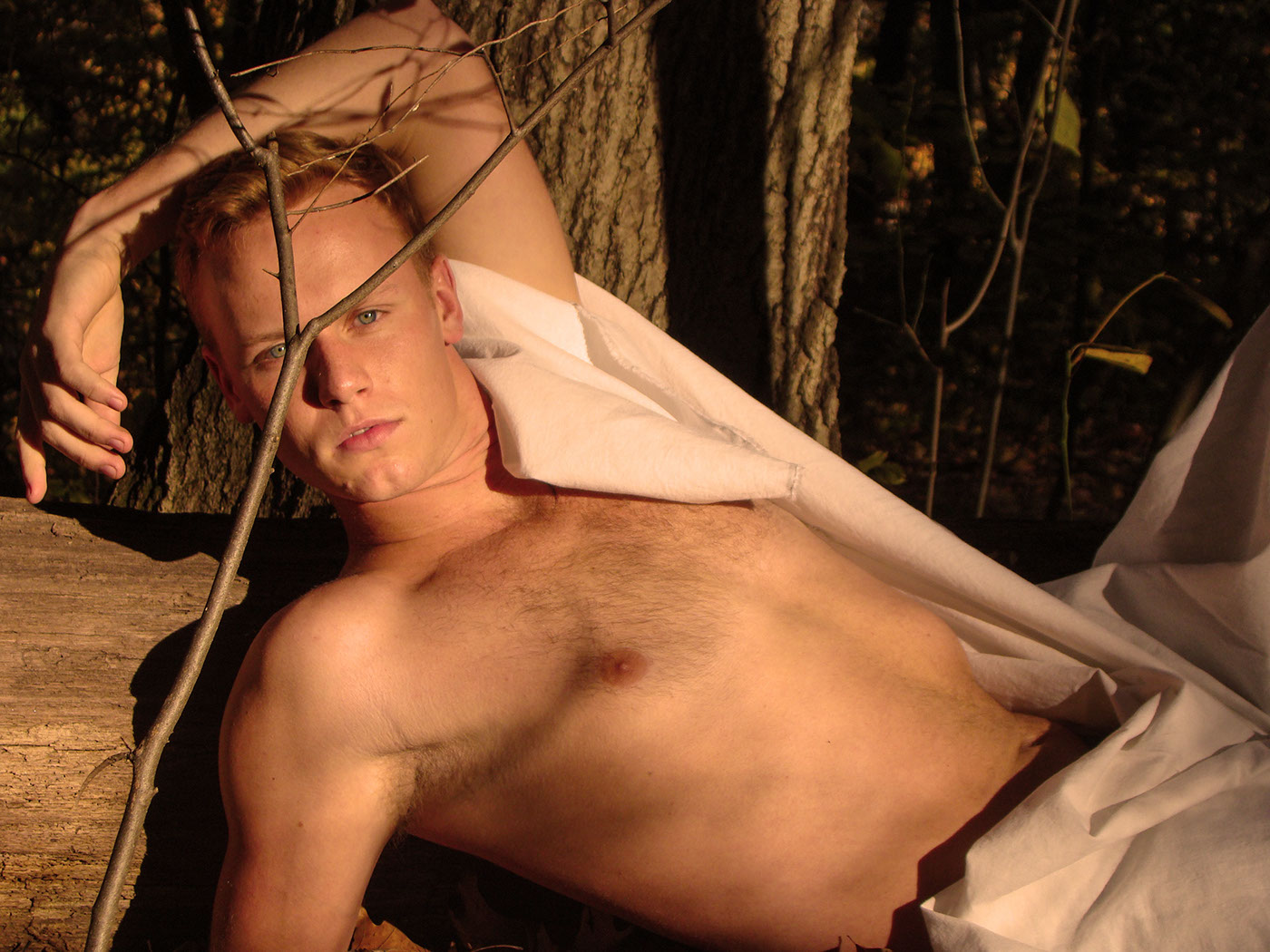T H E S T U D Y O F M A L E
VISUAL MANIFESTO
Cultural views of American masculinity are created and sustained most profoundly through the use of image. Film, television, advertising, fashion, and social media all play prominent roles in the construction of the male identity. As American culture becomes increasingly reliant on photographs and visual work as a means of communication, images now have the power to design and craft masculine identity. While the creation of visuals has been democratized largely due to social media, the normalized, idealized, and popular idea of male identity remains under the control of the mass and popular media. While there are multiple male identities created and reinforced by these outlets, the most generalized one is that of heterosexual, white masculinity. The ideal male is white, tall, lean, rugged, focused on gaining the appearance of an Adonis-like body, and is dedicated to exhibiting his strength and dominance through sport and competition with peers. Emotionally, he is stoic, often devoid of emotion and tending toward anger, and often unable to express his inner feelings, leaving him without a wholesome and emotionally rich sense of brotherhood among his peers. Therefore, his social standing among peers is influenced by exhibitions of his toughness. His sexuality is based on distancing himself from homosexuality, and in turn becoming aggressively heterosexual, exuding dominance over women who are regarded as sexualized objects rather than equals and friends. These characteristics have given society a set of norms that the modern male is expected to conform to in order to be deemed “desirable”, “normal”, or “accepted” in mainstream culture. Such a standardized image of masculine identity is detrimental to males as it is does not exhibit the inherent complexity of one’s body, emotion, sexuality, and social standing that make up one’s whole identity. This idealized male form has become ubiquitous because of the widespread distribution of images that perpetuate these ideas. Therefore, it is nearly impossible to break the rigid stereotype in a meaningful way.
This collection of photographs is the product of an analysis of the popular male ideal, and a subsequent attempt to subvert it and explain it through image. Males in these images are portrayed in all of their emotional, physical, and sexual complexity, contrary to the simplistic popular view. These images convey ideas of softness, vulnerability, and a connection to one’s emotions and inner Self. Images are used to depict men as modernized pieces of classical art, as rugged and autonomous beings, as exhibiting love amongst peers, and as rejecting the connection between economic prosperity and identity. Other visuals represent the dark internal conflict a man grapples with when his true identity contrasts sharply with his expected outward image, and the arduous process he must undertake to abolish conformity. These images loosely draw upon iconic photographs in popular culture and monumental moments in the visual construction of the male as subtle references. The aesthetic choices of the photographs are symbolic; the colors of the sunset, which are present in each photograph in some way, speak to the metaphorical setting of a rigid masculine image before a new dawn of male liberation and autonomy rises. These tones also seek to highlight softness and warmth – characteristics that are seldom present in images of men.
Each image is laden with a visual richness that invites the viewer to gaze at the image at length in order to understand what story the subject is trying to tell. But as with any work of art, viewers will draw upon their own experiences and identities to interpret and analyze the piece, thus engaging the work and the Self in a meaningful discourse about who we are, and how image plays a role in our own constructions.
S O F T N E S S
This series depicts man as a soft, gentle subject who is in tune with his emotional self and inner complexity. These are qualities that often remain hidden from view due to the expectation of a man to remain stoic and emotionally aloof.
This collection, especially the last photograph in the group, drew upon the iconic photograph of the young Afghan girl on the cover of National Geographic in June 1985 as inspiration. Just as her eyes drew viewers in to learn of her plight in her home nation, here we are drawn in to explore the story behind this man in all of his dimensions.




A U T O N O M Y
This series draws upon iconic photographs of James Dean, an example of rugged male sexuality, as inspiration. In this series, the subject remains poised, stoic, and confident. His rugged appearance is not grounded in oppression or dominance, but rather in self-acceptance, independence, and through making peace with the inner self.



D I V I N E
Men in society are viewed as gods: they are the ones that exude dominance over the earth's creatures, their brethren, and most crushingly, women. Drawing upon images of males in Greek art, this series depicts man not as an oppressive warrior, but a transcendental being who is in control of his destiny, and in tune with his inner beauty and self-worth.




P R O S P E R O U S
Man's self-worth, social standing, and entire identity has been shown to be closely linked to his economic prosperity and success. This is a detrimental standard, which leads men to feelings of insecurity, and a hungering desire for financial wealth. Here is a man who has hit rock bottom because of this drive for wealth, leaving his true identity and aspirations to remain caged and hindered.


C O N F L I C T E D
The modern American man is a deeply oppressed figure whose true self remains squandered. This series gives a visual representation to the inner war a man faces when his truest self is contrary to the socially-imposed self, and what such rigid masculine expectations have done to him.






L O A T H I N G
Females are often seen as the only gender suffering from body image issues, but they are not. Men are equally subject to feeling dissatisfied with their bodies because of a cultural desire for bodily perfection. This leads men to eating disorders, depression, and a deep sense of self-hatred. This photograph depicts the dark struggle men face silently, and alone.

E M P O W E R E D
Though the modern male is oppressed by the society he lives in and the inner conflicts he faces, he remains an independent being who is in control of his destiny. He uses the visions of his identity as his means of empowering himself into being his true self outwardly. If males dedicate themselves to abolishing masculine norms in the name of liberation, the sun will set on oppression, and a new dawn of male freedom will rise.





